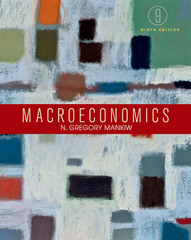Question
Instructions This homework assignment involves the Critical Loss/Critical Elasticity (CL/CE) approach to market definition. It is covered both in the Lecture Videos and in the
Instructions This homework assignment involves the Critical Loss/Critical Elasticity ("CL/CE") approach to market definition. It is covered both in the Lecture Videos and in the Lecture Notes on Canvas. The goal in this assignment is to get you to work through a single problem that is like one that appeared on Midterm Exam 1. Background on SSNIP Test The CL/CE approach is a way to implement the SSNIP test without needing to have greatly detailed information on demand, costs, etc. We begin market definition with a "candidate market"; call it A. This could be a candidate product market or a candidate geographic market. For simplicity, I will refer to A as a candidate product market.
Recall that the SSNIP test asks if a hypothetical monopolist, if it were to add a SSNIP to the existing prices of all sellers of A, would (hypothetically) increase profits above the overall level of profits for A before the SSNIP was added. If the SSNIP were profitable, this would indicate that not many customers would switch away from A to escape the price increase represented by the SSNIP. We would then say that A represents an "antitrust market". We would then use the market defined in this way to calculate market shares, etc.
If the SSNIP is not profitable, this means that too many customers are switching away from A to other products. This tells us that we need to expand our candidate market to include some other product, B, to which former A customers are switching. We then do a SSNIP test on A and B. If it is profitable, we stop; A and B are an antitrust market. If not, we expand the candidate market even further to include other products, etc. We stop when we have a profitable SSNIP.
Thus, the key to whether or not a SSNIP would (hypothetically) be profitable depends on how many customers would be lost due to the SSNIP. CL/CE The CL is the percentage reduction in demand that would make our hypothetical monopolist indifferent between imposing the SSNIP or not imposing it. In the lecture notes (written and recorded) I derive the CL formula. That formula is: CL = X/(X + m) where X is the size of the SSNIP and m is the average margin earned by sellers in the candidate market. Remember, you pick X yourself (X = 0.05 is the usual size that analysts use). Thus, if sellers in the candidate market make a 30% margin on average, and if we use a 5% SSNIP, CL = 0.05/0.35 = 0.142.
This means that if we believe that a 5% SSNIP will cause quantity demanded to fall by less than 14.2%, the SSNIP is profitable and our candidate market is the one to base our further round of analysis on. If we think that the actual loss in quantity demanded is likely to be greater than a 14.2% reduction, then the SSNIP would be unprofitable. We would need to expand our candidate market to include more substitute products.
We can rephrase the test in terms of a price elasticity. By the definition of what a price elasticity is, we can calculate a critical price elasticity by dividing CL by X. Thus, we get a critical price elasticity of CE = 1/(X + m). In our example, CE equals 0.142/0.05 = 2.84. If the actual price elasticity is less than 2.84, this means that the CL is less than 0.142, and the SSNIP, therefore, is profitable. If the actual price elasticity is greater than 2.84, then we need to expand our candidate market.
It is advisable for you to read the HMGLs for information about the Hypothetical Monopolist test and the SSNIP test.
Questions 1. Suppose that m = 0.45. Calculate CL and CE using a 5% SSNIP size. 2. Assume that you know from industry information that the actual price elasticity is 0.78. Does the candidate market that you began with pass the SSNIP test?
Step by Step Solution
There are 3 Steps involved in it
Step: 1

Get Instant Access to Expert-Tailored Solutions
See step-by-step solutions with expert insights and AI powered tools for academic success
Step: 2

Step: 3

Ace Your Homework with AI
Get the answers you need in no time with our AI-driven, step-by-step assistance
Get Started


